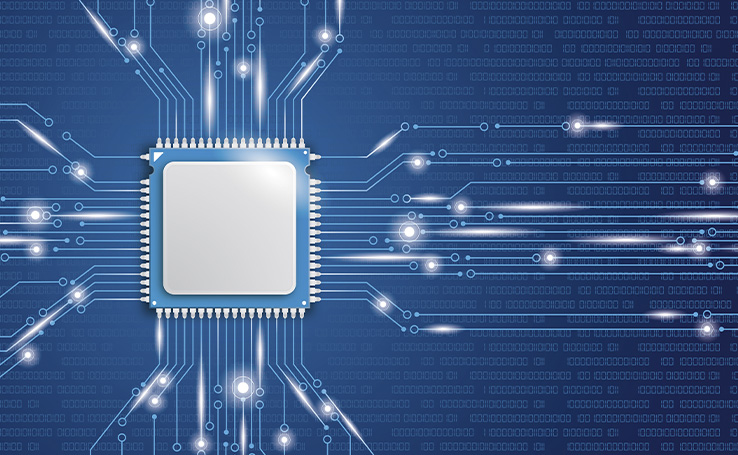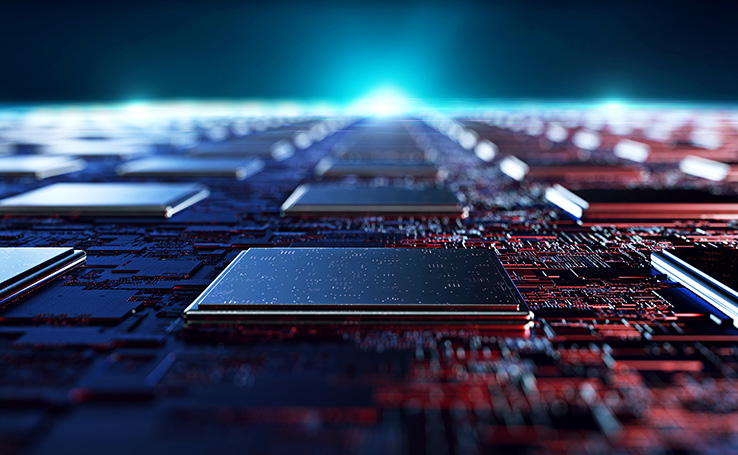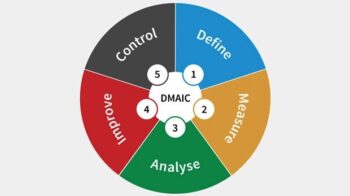
What is a processor and how does it work ? When choosing a computer, one of the most important components for the machine’s performance is the processor. Also known as the CPU (Central Processing Unit), this part is responsible for processing and performing most of the tasks performed on the PC, from Excel spreadsheets to the heaviest games.

Next, understand how processors work, find out which factors are decisive for their performance and learn how to choose the ideal model for your needs.
Also Read : The most powerful mobile processors for smartphones
Table of Contents
What is a processor and how does it work?
The processor is one of the main parts of an intelligent electronic device, be it a PC, smartphone or even a smartwatch. It is responsible for processing practically all the commands and operations performed on the computer, acting from the control of the RAM memory to the opening and execution of a program, communicating with the other parts of the machine through the motherboard and its various buses.
For its function, the processor is often considered as the brain of the computer, also acting in the organization of the entry and the exit of the data, in the recording of the information in the memory and in the storage devices.
Currently, the two main computer processor manufacturers are Intel and AMD. Both produce CPUs for virtually all price and performance segments, as we will see later.
Understanding how the CPU works
The modern processors for PCs are built from billions of transistors, small components that individually perform operations from electrical signals, which are converted to the digital world in binary form “0” and “1”. Everything is manufactured on a nanoscale scale, making it impossible to observe each of the physical parts with the naked eye.
The arrangement of these transistors in larger units allows complex operations to be performed in a fraction of a second. Therefore, the processor is the unit responsible for translating each command received and generating a response, whether to open an application, play a video on YouTube or run a game of Fortnite (something done with the aid of the GPU, the video card) .
The processor has several specialized units inside it, in addition to registers (an extremely fast and expensive type of memory) and other levels of memory of its own, as we will show below.
In a simplified way, the processor receives an instruction from an app or the operating system, performs a calculation and issues a response. The process is divided into three stages, which are:
- – Search
- – Decoding
- – Execution

These operations are performed from a set of pre-defined instructions, which can be mathematical, comparative, among others.
Colors: the key to real multitasking
In the past, CPUs were built as a single physical processing unit. Over time, operating systems and applications have become increasingly complex, requiring a very large volume of operations, all performed at the same time.
To cope with so much work, one of the solutions adopted by the manufacturers was the creation of multicore processors and architectures , today used in practically all modern devices, such as smartphones, tablets , notebooks and desktops.
The color (core) are smaller processing units. Interconnected within the CPU, they share the workload more efficiently. It is common to see terms such as dual-core (two cores), quad-core (four cores), octa-core (eight cores), among others, even for mobile devices.
Many of the latest Intel and AMD processors have between 2 and 10 processing cores. Models aimed at the professional segment can have up to 64 cores in the same part, called CPU die, being especially efficient in complex calculations and tasks such as rendering and video decoding . The most modern games have also been optimized to make the most of these colors, delivering high performance and stability for gamers.
Hyper-threads and SMT
In addition to physical color division, many processors also separate workloads into different logical units, called processing threads. This division helps to optimize the workflow, usually resulting in more performance for the computer. Each company uses a different name for the technique, such as Intel Hyper-Threading and AMD SMT (Simultaneous Multi-threading).
Generally speaking, the more processing cores and threads, the more tasks the processor can perform simultaneously. However, this does not always translate into more performance: it is necessary that the program is optimized by the manufacturer to make the most of the potential of each core.
In addition, other factors influence the overall performance of the processor, as we will see below.
Clock: understanding the CPU frequency
Another value that you will find when searching for processors for your computer is the clock. Measured in Hertz, this number shows how many cycles per second the processor is capable of. A processor operating at 2.5 GHz (Gigahertz) completes 2.5 billion cycles per second, for example.
You should be aware of the fact that the manufacturers usually disclose two distinct clocks, which are the base clock and the boost clock. Understand the difference:
- – Base clock: standard operating frequency of the processor. A low clock is generally used, which offers balanced performance with low power consumption, ideal for simpler operations and when the machine is idle.
- – Boost Clock (Turbo clock): it is the maximum frequency of operation of a processor (or some of its cores) for when it is triggered (when opening a program or to run a game, for example). Each manufacturer has different nomenclatures and ways of measuring, so take a good look at the description of the model you intend to buy.
Power is nothing without control!
Normally, the higher the clock, the higher the performance of the processor tends to be. But there are several important details that make it virtually impossible for manufacturers to simply invest in increasing that frequency. First, the transistors that make up the CPU have physical limitations that prevent them from speeding up from a certain point (we rarely see processors operating above 5 GHz).
In addition, the higher the processor clock, the more heat it generates and the more energy it tends to consume. This is especially bad when it comes to portable devices, such as notebooks, where the machine needs to balance performance, battery life and operating temperature.

Knowing overclocking and its risks
One of the most talked about techniques in the PC world is overclocking. Overclocking literally means running a component (like the processor) above the operating frequency for which it was designed by the manufacturer. The purpose of overclocking is to get more performance out of parts. However, it is necessary to have knowledge on the subject, as this technique can easily damage components when not performed correctly.
In addition, not all motherboard and processor models allow overlock. Therefore, consult the manufacturers’ recommendations and the warranty terms before carrying out this operation!
What changes between generations of processors
It is worth mentioning that the processor architectures have undergone a series of optimizations over the years, which generally result in less latency between the operations performed and also in an ability to process more instructions per clock (Instructions per Clock – IPC). For this reason, two processors of different generations, with the same amount of colors and clock, present different performance.
Another important change that usually occurs when there is a leap in generation of processors is the change in lithography. It is used to name the technology used in the manufacture of processors and indicates the size of the components and resources integrated into the semiconductor. The measurement is expressed in nanometers (nm).
Typically, reductions in lithography allow you to add more components to the same area of the chip (be they colors , memory or other units). The process also results in more optimized parts, capable of operating using less energy (consequently generating less heat).
Cache Memory
To work with so much information at the same time, the processors have their own memory, which is inside the chip. Known as cache memory, it is extremely fast and stores the information most used by the processor. Because of its speed and because it is much closer to the processor cores, it operates as a buffer between CPU and RAM, speeding up the calculations in progress.
Cache memory is divided into different levels within the processor, which makes them named L1, L2, L3 and L4. The L1 types are the closest to the cores (and also the most expensive), being available in smaller quantities, but extremely efficient.
As we level up, the amount of available cache memory increases, as does access latency. Depending on how the CPU architecture is configured, the highest levels of cache can be shared by multiple cores, making it easy to exchange data and perform complex operations.
Socket: the fit between CPU and motherboard
The processor communicates with all other components of the computer, performing tasks such as controlling RAM memory and making calls to the video card. The bridge between all the parts is the motherboard, which has a special socket for the CPU, called a socket.
Sockets are usually specific to each generation of processor, be it Intel or AMD. The explanation for this is that new features are implemented by the manufacturers, such as changes in the type of RAM and even in the way they receive power.
How to choose a processor
It is important to know how to choose the ideal CPU model for your PC. The starting point is to determine what you will be using the computer for and how much performance will be required. A computer for working with spreadsheets and surfing the internet requires much less processing power than a PC Gamer or a video editing machine, for example.
Once you know the function of the computer, simply consult the processor model to know all the necessary information, including generation and performance category. Let’s go to an example with an Intel processor?
Intel® Core ™ i9-10900K processor
When looking at the name above, you should pay attention to the following parts:
- – Intel: Manufacturer name
- – Core i: Processor family
- – i9: Indicates the performance class. The models of the “Core i” line are divided into i3, i5, i7 and i9. The higher the value, the greater the performance offered, when compared to processors of the same generation
- – 10900: This number must be read in two separate sets. In the first part, the “10” indicates that it is a tenth generation processor. The 900 is a second performance indicator. The higher the value, the greater the firepower of the processor
Intel also uses some suffixes to highlight other processor details. The “K” means that the processor comes with its multipliers unlocked, making it possible to overclock. The acronym “KF” indicates that there is no onboard graphics processor. The letter “U”, on the other hand, indicates low-energy mobile processors, normally aimed at ultra-compact notebooks and PCs.
Let’s take another example, this time with an AMD processor:
- – AMD Ryzen ™ 9 3900X
- – AMD: Manufacturer’s name
- – Ryzen: Processor family
- – 9: Indicates the performance class. The models in the “Ryzen” line are divided into 3, 5, 7 and 9. The higher the value, the greater the performance offered, when compared to processors of the same generation
- – 3900X: This number must be read in two separate values. In the first part, the “3” indicates that it is a third generation Ryzen processor. The 900 is a second performance indicator. The higher the value, the greater the firepower of the processor
Like Intel, AMD uses suffixes that help to classify the CPU. The “X” denotes units with a higher clock than normal, while the letter “U” shows mobile processors with high performance and low power consumption.
***
Now that you know what it is, how it works and how to choose a processor, it is important to note that the performance of a computer depends not only on the CPU, but also on other parts that directly influence the system.
Video cards, for example, are specialized in the execution of three-dimensional graphics in real time, offering more performance in games and graphics applications. The amount of RAM and storage can affect the multitasking capabilities of the machine, as well as the time to open applications.
SSDs, on the other hand, guarantee greater speed in activities such as opening and saving files, loading applications and starting the system. To choose the best hardware configuration for you, always define your real usage needs, giving preference to the components that will most impact your day to day.
Also Read : Top 5 technology trends for 2021




3 Replies to “What is a processor and how does processor work?”
Comments are closed.